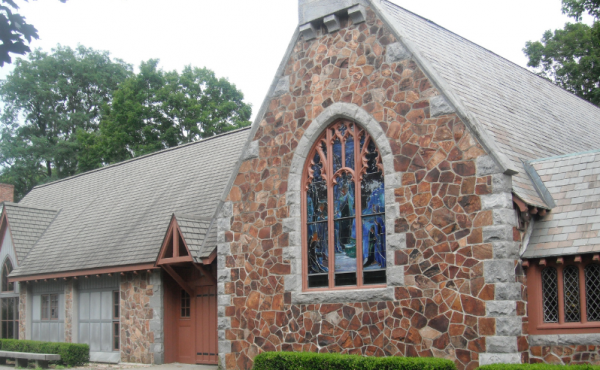May 22, 2024
The Episcopal Church Has Too Many Buildings
This is the second post of a two-part series. Read the first post here.

There’s my bias. I believe The Episcopal Church has too many buildings. More than 6,000+ congregations and more than 100 dioceses scattered throughout the United States and other countries with churches, chapels, parish halls, parish houses, vicarages, rectories, other houses, diocesan centers, retreat houses, camps and conference centers, other real estate holdings and churchyards and stuff … the list goes on. It’s a lot.
Buildings consume a lot of attention and maintenance and money. We know that.
What’s more, we built a lot of our buildings in the height, or post-height of the Baby Boom – using the inexpensive building materials and processes that were in favor in the 1960s and 70s. Those materials and processes were then, and certainly are now, unsustainable both environmentally but also financially. Today, they pose ongoing challenges – health challenges and financial challenges. What else would you expect from scores of drafty, inexpensively built buildings with gas-guzzling HVAC systems?
We know that. All of that. And we also know that some (many?) of our buildings are vital to our presence and mission and ministry. But could we have a fulsome, churchwide audit of our received physical inheritances?
In his 2018 book, Letters to the Church, Francis Chan points out two additional realities.
First, buildings limit growth. How big of a building are you going to build to impact your community for the Gospel of Christ? Episcopalians tend to build sweet, small church buildings. But even if we built a huge mega-church (I know we don’t, but for argument’s sake let’s play with the idea), it’d still only seat a few thousand, maybe 10,000 max. Such a massive building would be both environmentally and financially costly. Just think how large the asphalt parking lot would need to be for all those vehicles. Talk about environmental degradation! And even if we built this mega-church, how would that disciple the larger community? I live in a County whose total population is 113,000; a small, tight-knit community. Here, the fastest-growing church recently built what I’d call a mega-church, with (I’m guessing) 1,500 seats. They host two services each weekend, so total worship attendance (assuming all seats are full) = 3,000. What, then, about the other 110,000 who live in St. Mary’s County, MD?!
Second, buildings also limit our ability to decline. If God is going to prune the church here or there, pruning it into smaller, more intimate gatherings of spiritual nourishment and care, we’d fight God tooth and nail! You clearly don’t understand, God: we have bills to pay and buildings to maintain.
The Episcopal Church has too many buildings, and by virtue of this received physical inheritance they are, almost entirely, preventing us from talking about the things we really need to focus on. That’s my bias, fully disclosed. Agree or disagree as you will. But I have a hunch that many reading this agree with me – theoretically – but have no other choice than to stick with what they’ve got. My church is on the historic register, you say. Our parish hall is the only Episcopal parish hall within 50 miles, others say. Where else would our parish offices be, many rightly ask?
For starters, let’s try everything in our power to keep, and keep open our churches and chapels and worship spaces. In general, our churches are our most beautiful and architecturally significant buildings. When re-purposed to serve multiple uses – worship plus formation and justice and service and fellowship – our churches are The Episcopal Church’s most necessary buildings to retain and maintain.
So, then, what about all those other buildings? How many copy machines do we need scattered throughout a relatively large geographic area? How many offices? How many administrative staff, especially when so much is in the cloud anyway? How many houses for clergy who tend to not want to live in church-provided housing? Are congregations really good landlords, or do we just like the rent check?
A big reason, perhaps the biggest reason why we don’t feel permitted or able to have this larger conversation about property and received physical assets is because we’re not actually one church, in practice, on the ground. It’s scary to go ‘all in’ with neighbor congregations; far easier to simply do ministry and joint projects together, here or there. I know that. But, on this point about property, there’s a huge benefit. Only when there’s full institutional collaboration – parishes not only doing ministry side-by-side but ‘all in’ with neighbor congregations as one church with one leadership team (be it a merged parish with one vestry or multiple vestries fully partnering together) – are finally able to see the duplications, redundancies, economies of scale, potential savings, opportunities, and challenges. We won’t release the properties and buildings we don’t need, and which are literally suffocating the church in lots of little ways, until we become, in practice, one church.





